Introduction
In the realm of telecommunication and computer networks, the application of Dual Tone Multi-Frequency (DTMF) technology has extended beyond traditional telephony into diverse fields, including industrial automation and control systems. One intriguing application of DTMF technology is in the speed regulation of DC motors. This project, titled “Speed Regulation of DC Motor Using DTMF Keypad,” explores how DTMF signals can be leveraged to control the speed of a DC motor remotely. This commentary will delve into the project’s objectives, methodologies, technical details, and potential implications in various sectors.
Objectives
The primary objective of this project is to design and implement a system that allows for the remote control of a DC motor’s speed using a DTMF keypad. The key goals include:
1. Integration of DTMF Technology: Utilize DTMF signals, commonly used in telephone systems, for motor speed control.
2. Remote Operation: Enable the remote operation of the DC motor, thereby providing flexibility and convenience.
3. Precision Control: Achieve precise control over the motor speed, ensuring reliable performance for various applications.
4. User-Friendly Interface: Develop an interface that is easy to use and understand, making the technology accessible to a broad range of users.
Methodology
System Architecture
The project employs a combination of hardware and software components to achieve the desired control over the DC motor. The core components of the system include:
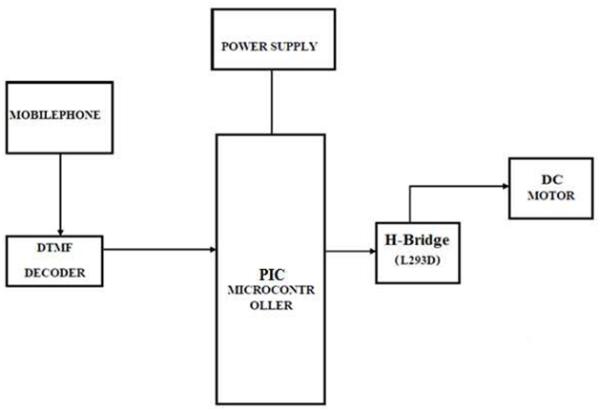
1. DTMF Keypad: The primary input device for the system, allowing users to send specific DTMF tones corresponding to different speed levels.
2. DTMF Decoder: A hardware component that decodes the DTMF signals received from the keypad into binary digits.
3. Microcontroller: Serves as the central processing unit, interpreting the decoded DTMF signals and generating corresponding Pulse Width Modulation (PWM) signals to control the motor speed.
4. DC Motor: The output device whose speed is regulated based on the PWM signals generated by the microcontroller.
5. Motor Driver Circuit: An interface between the microcontroller and the DC motor, amplifying the PWM signals to a level suitable for driving the motor.
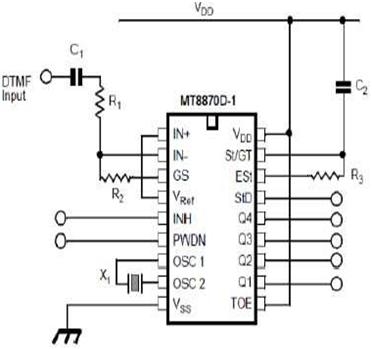
Working Principle
The system operates on the principle of converting DTMF signals into PWM signals to control the motor speed. Here’s a step-by-step explanation of the process:
1. DTMF Signal Generation: When a user presses a key on the DTMF keypad, a unique tone combination is generated. Each key on the keypad corresponds to a specific frequency pair, which the DTMF encoder transmits as an audio signal.
2. Signal Decoding: The DTMF decoder receives the audio signal and converts it into a 4-bit binary code. Each binary code represents a specific key press.
3. Microcontroller Processing: The microcontroller reads the binary code and maps it to predefined speed levels. Based on the input, the microcontroller generates corresponding PWM signals.
4. Speed Control: The PWM signals are sent to the motor driver circuit, which adjusts the voltage and current supplied to the DC motor, thereby regulating its speed.
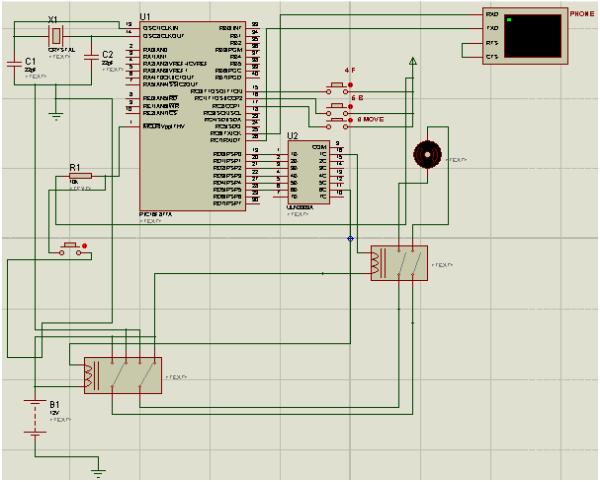
Technical Details
DTMF Technology
DTMF technology, initially developed for touch-tone telephony, uses a combination of two distinct frequencies (one from a high-frequency group and one from a low-frequency group) to represent each key on the keypad. For instance, pressing the key ‘1’ generates a combination of 697 Hz and 1209 Hz tones. This dual-tone system ensures robust and reliable signal transmission over telephone lines.
DTMF Decoder
A commonly used DTMF decoder IC is the MT8870, which can decode the audio tones into a 4-bit binary output. The IC has internal filters and logic circuits to accurately decode the signals, making it suitable for telecommunication applications.
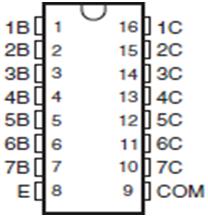
Microcontroller
The microcontroller serves as the brain of the system, processing the decoded signals and generating appropriate PWM outputs. Microcontrollers like the Arduino or PIC series are ideal for this application due to their ease of programming and availability of PWM pins.
Pulse Width Modulation (PWM)
PWM is a modulation technique used to control the amount of power delivered to an electronic load, such as a DC motor. By varying the duty cycle of the PWM signal (the percentage of time the signal is high in a given period), the microcontroller can precisely control the motor speed. A higher duty cycle results in a higher average voltage and thus a higher motor speed.
Motor Driver Circuit
The motor driver circuit, often built around H-bridge configurations, acts as an interface between the microcontroller and the DC motor. It ensures that the low-power PWM signals from the microcontroller can effectively control the high-power motor.
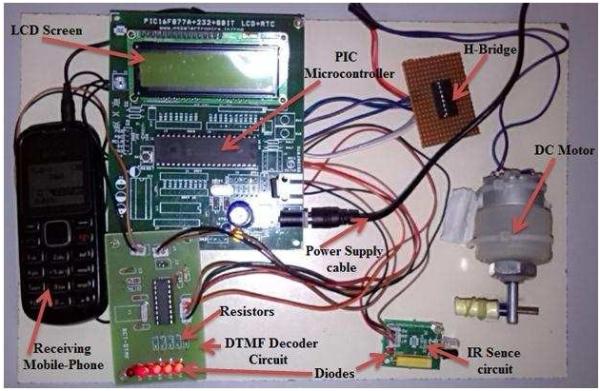
Applications and Implications
Industrial Automation
The ability to control motor speed remotely has significant implications for industrial automation. It allows operators to adjust the speed of conveyor belts, robotic arms, and other machinery from a central control room, enhancing operational efficiency and safety.
Remote Control Systems
In remote control systems, such as those used in unmanned aerial vehicles (UAVs) and remote-controlled robots, precise motor control is crucial. This project’s approach can be applied to enhance the reliability and responsiveness of these systems.
Home Automation
In the context of home automation, the technology can be used to control household appliances like fans and pumps. Integrating DTMF-based control with existing home automation systems can provide a convenient and cost-effective solution for users.
Education and Research
For educational and research purposes, this project serves as an excellent example of integrating telecommunication technologies with embedded systems. It provides students and researchers with hands-on experience in designing and implementing control systems.
Challenges and Solutions
Signal Interference
One potential challenge is the interference of DTMF signals with background noise. To mitigate this, robust filtering techniques and error detection mechanisms can be employed to ensure accurate signal decoding.
Latency
Another challenge is the latency in signal processing and motor response. This can be addressed by optimizing the microcontroller code and using high-speed decoders and motor drivers to minimize delays.
Scalability
Scaling the system for more complex applications might require integrating multiple DTMF keypads and decoders. Designing a scalable architecture that can handle multiple inputs and outputs efficiently is crucial for broader applications.
Future Prospects
Integration with IoT
Integrating this system with Internet of Things (IoT) platforms can significantly enhance its functionality. Users could control motor speeds via smartphone apps or web interfaces, providing greater flexibility and remote monitoring capabilities.
Enhanced Security
Incorporating security features such as encryption of DTMF signals and authentication mechanisms can prevent unauthorized access and ensure secure operation, particularly in sensitive industrial environments.
Advanced Control Algorithms
Implementing advanced control algorithms, such as PID (Proportional-Integral-Derivative) control, can improve the precision and stability of motor speed regulation, making the system more robust and reliable.
Conclusion
The “Speed Regulation of DC Motor Using DTMF Keypad” project exemplifies the innovative application of DTMF technology in the field of telecommunication and computer networks. By leveraging readily available DTMF signals for precise motor control, this project opens up new possibilities in industrial automation, remote control systems, home automation, and beyond. Despite challenges like signal interference and latency, the project’s potential for integration with IoT and enhanced security features make it a promising solution for modern control systems. This project not only highlights the versatility of DTMF technology but also provides a practical approach to solving real-world problems through interdisciplinary engineering.
Follow this link for complete project: Telecommunication and Computer Networks: Speed Regulation of DC Motor Using DTMF Keypad
